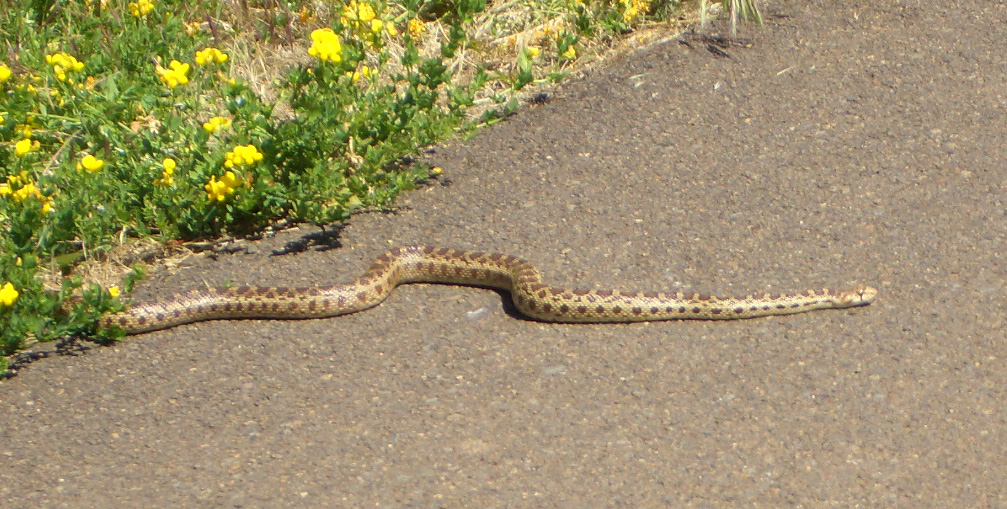Pacific Gopher Snake (Pituophis catenifer catenifer) on Jul 7, 2008
Submitter does not have a specimen
Description of specimen
This is a snake. I know perfectly well that a snake is not a mammal - I just used that because I had to put something in and there is no option for snake. The species type for snake is not provided. I have lived in Oregon for over 30 years and have never seen such a large snake. It is yellow, with spots. I wondered if someone might have released a purchased snake in this wilderness park. It was laying on the cement, but when we returned it had moved on - some bicyclers and kids had passed us, and probably disturbed it.


Reporter
July 7, 2008, 5:58 a.m.
There is no cause for concern. The great photo you took is of a harmless native Pacific Gopher Snake, also known as a bull snake - there are numerous pictures of them on the Internet from Polk County, Oregon, as this is part of their native home range.
The Pacific Gopher Snake makes its home in a variety of habitats. The usual
preference is open grasslands, sagebrush, and chaparral; but oak woodlands,
coniferous forests with sunny openings or large meadows, coastal hillsides,
pastures and farmland are all suitable.
Gopher snakes will hibernate during winter months and for longer if they reside in higher altitudes. Elevations for the Pacific's habitat range from above sea level up to 6,000 ft (near alpine). Some subspecies of P.c. catenifer have been found at up to 9,000 ft.
Aside from the hiss, rattle and bluff behaviors, identifying the Pacific is best done with a quick look at the head. Gopher snakes typically have a dark stripe across the head between their eyes like a mask; most have a pronounced stripe on each side of the head that starts behind the eyes and moves down and back diagonally across the cheeks;and most also have a short vertical stripe just below the eyes. The overall background color of this snake is grayish-brown, sometimes olive-tan (in your case, this snake was very light colored, but color variation is common). Dark dorsal blotches start at the neck and are well-defined and separate; they do not generally connect with the corresponding small upper side blotches, nor do the upper touch the
even smaller lower side blotches. Blotching continues down the length of the snake to the tail where most of the side-blotches fade out. Some adult specimens may have a reddish background hue near the tail. Belly is cream-white to pale yellow with random black spots.
And by the way, thanks to your report, we have now added reptiles to our list of species. Thank you!
Lisa DeBruyckere
July 8, 2008, 4:38 a.m.